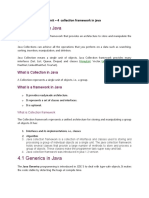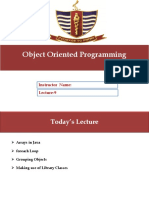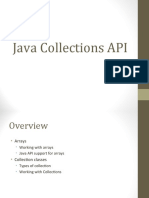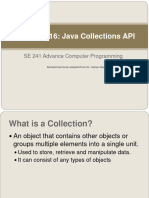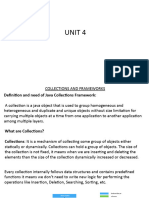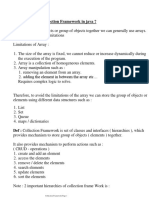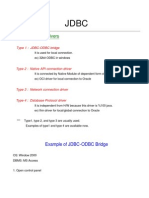0% found this document useful (0 votes)
258 views13 pagesJava Collection Classes
The document discusses Java collection classes and frameworks. It introduces common collection classes like LinkedList and ArrayList, which allow grouping of objects into collections. It provides examples of using an ArrayList to store Student objects in a Course class. The key benefits of collections are reducing programming effort by providing useful data structures, and allowing unrelated APIs to interoperate through common collection interfaces.
Uploaded by
seenuCopyright
© Attribution Non-Commercial (BY-NC)
We take content rights seriously. If you suspect this is your content, claim it here.
Available Formats
Download as PDF, TXT or read online on Scribd
0% found this document useful (0 votes)
258 views13 pagesJava Collection Classes
The document discusses Java collection classes and frameworks. It introduces common collection classes like LinkedList and ArrayList, which allow grouping of objects into collections. It provides examples of using an ArrayList to store Student objects in a Course class. The key benefits of collections are reducing programming effort by providing useful data structures, and allowing unrelated APIs to interoperate through common collection interfaces.
Uploaded by
seenuCopyright
© Attribution Non-Commercial (BY-NC)
We take content rights seriously. If you suspect this is your content, claim it here.
Available Formats
Download as PDF, TXT or read online on Scribd
/ 13



